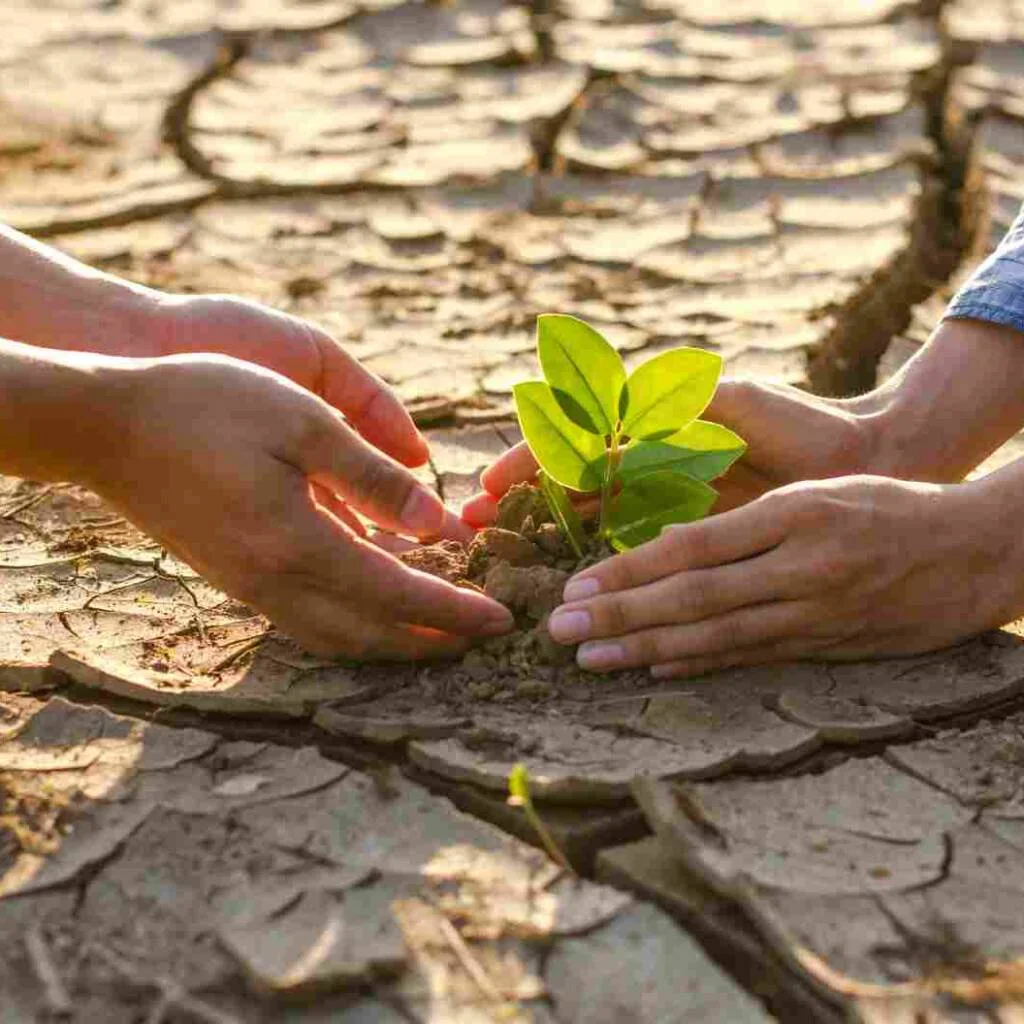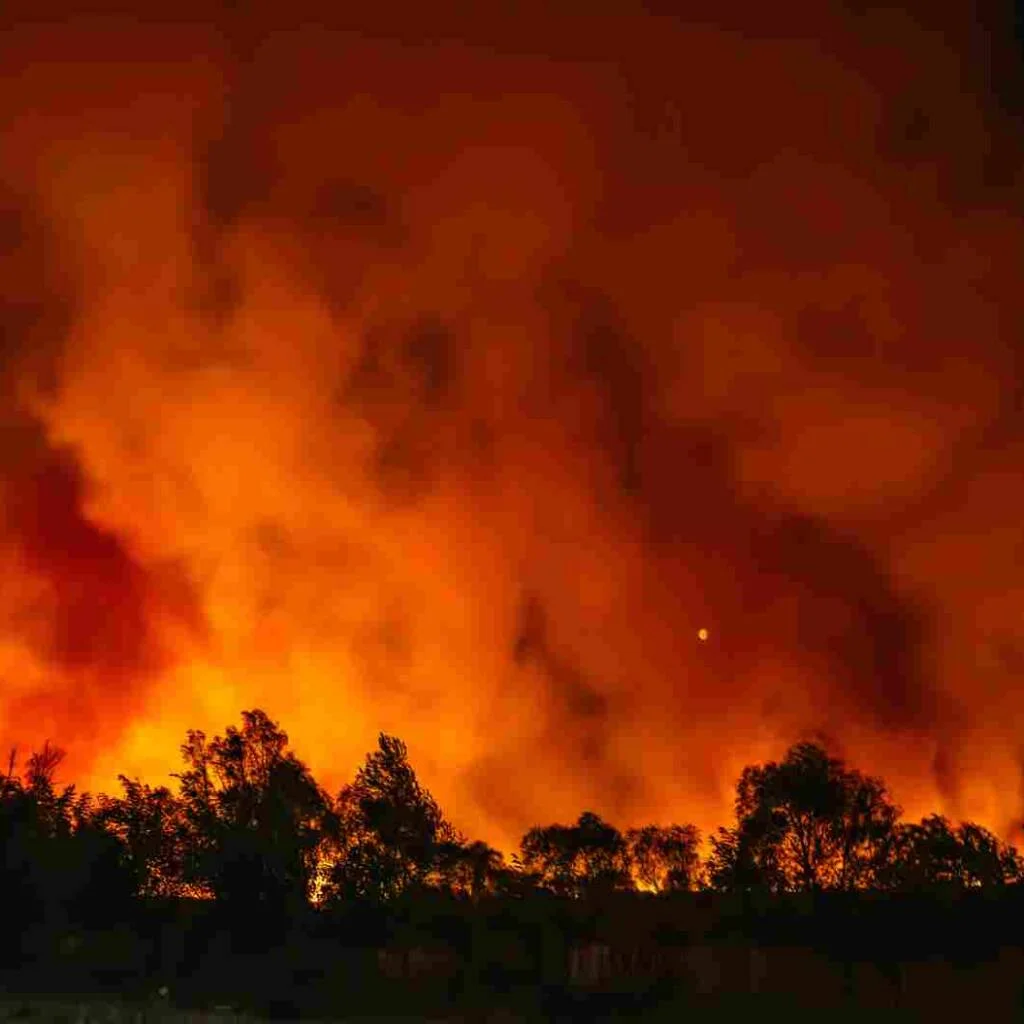



Climate Chronicles: From Stark Realities to Resilient Futures
Unraveling the Heatwave Chronicles and Their Ripple Effects
The summer of 2023 was not just another summer. It was a stark reminder, a distress beacon from our ailing planet, drawing attention to the relentless consequences of unchecked human activities and our tumultuous relationship with nature.
NASA’s Goddard Institute of Space Studies (GISS) painted a sobering picture of this epochal moment in Earth’s climate history: The summer of 2023 was the hottest since meticulous record-keeping commenced in 1880. To the uninitiated, a 0.23 degrees Celsius deviation from previous highs might seem statistically insignificant. However, in the intricate, balanced web of Earth’s ecosystems, even such ostensibly small variations can trigger profound consequences.
Regions across the world became unwitting theaters for this climatic drama. Europe, traditionally celebrated for its temperate climes and natural beauty, experienced unparalleled heatwaves, bringing daily life to a screeching halt in many of its bustling cities. South America, Japan, and the U.S. weren’t spared either, each facing their own set of challenges spurred by the relentless heat.
Amidst the glaring sun, there was fire and rain, two sides of the same climatic coin. The usually pristine landscapes of Canada and Hawaii were consumed by devastating wildfires, their flames fueled by the exceptional heat and dryness. Europe, on the other hand, was drenched. Regions like Italy, Greece, and Central Europe faced severe rainfalls, leading to property damage, displacement, and loss of life.
What culminated in this global phenomenon? The answers, complex and multifaceted, lead us to a mixture of both human-induced and natural factors. Human-caused greenhouse gas emissions, the dark underbelly of industrial progress, continued their remorseless ascent, trapping more heat in our atmosphere. Simultaneously, the Pacific Ocean bore witness to the re-emergence of the El Niño, a natural climate phenomenon known for its warmer sea surface temperatures. This meteorological event further exacerbated the global warming trend.
While these facts and figures provide an empirical perspective, they can’t capture the human stories, the lived experiences of those on the frontlines of this climate onslaught. In regions like Arizona, the scenario was not just about coping with higher temperatures. It was about confronting life-threatening heat that defied human endurance. The elderly, children, and those with health conditions found themselves especially vulnerable.
Communities worldwide had to contend with not just the physical challenges but also the psychological trauma of living in uncertainty. The unpredictability of the next extreme weather event, the looming threats of property damage, or the anxiety over the safety of loved ones – all these factors contributed to a complex tapestry of global climate-induced stress.
Such lived experiences raise critical questions that resonate beyond borders and cultures: How did we get here? Are these weather anomalies merely outliers, or are they harbingers of a new climatic norm? And most importantly, what can be done to recalibrate our relationship with the planet and ensure a sustainable future for the generations to come?
Uniting Voices: The Global Call to End Fossil Fuel Dependency
Across the globe, from bustling city streets to serene parks, there has been a rising tide of voices echoing a singular demand: a decisive end to the era of fossil fuels. Such broad, unyielding pleas for change are indicative of a collective consciousness about our planet’s current trajectory. These aren’t just the sentiments of environmentalists, but a reflection of a wider societal realization about the implications of our continued fossil fuel dependency.
Key international organizations are amplifying these voices, urging both the public and private sectors to act with urgency. One of the leading proponents of this movement is Amnesty International. Their focus isn’t merely on the environmental implications of fossil fuels but on the broader human rights issues interwoven with the climate crisis. The intrinsic connection between human rights and the environment is unmistakable. As the climate deteriorates, the ripple effects touch everything from public health and food security to migration patterns and conflict over dwindling resources.
As world leaders prepare to gather for the United Nations General Assembly High-Level Week, they’ll find themselves in the spotlight, scrutinized not only by their international counterparts but by millions around the globe. These forums, which often lead to diplomatic discussions behind closed doors, will now be held to account by an international community that’s more informed and impassioned than ever before.
Amnesty International’s Secretary General, Agnès Callamard, encapsulated the sentiment perfectly: “This generation faces a worsening climate catastrophe, with devastating consequences for human rights, but too many leaders in positions of power today are doing too little to avert this disaster, and even reneging on existing promises.”
She further emphasized the importance of safeguarding every individual’s right to a healthy environment. The narrative she crafts isn’t one of sheer admonishment, but rather, a clarion call for a just transition from fossil fuels to renewable energy sources. This isn’t just about mitigating climate change—it’s about envisioning a world where energy poverty is eradicated, and every person has access to clean, sustainable power.
While world leaders and corporations hold a considerable share of the responsibility, the role of ordinary citizens cannot be understated. Grassroots movements, community initiatives, and individual actions are collectively shaping the larger narrative. As more people educate themselves about the climate crisis, adopt sustainable lifestyles, and hold their leaders accountable, the momentum for change grows exponentially.
It’s no surprise that the background to this passionate outcry features several events coordinated worldwide for climate justice. The international community is more united than ever, and their message is clear: the era of fossil fuels must end, and a new dawn of sustainable energy must rise.
The tangible impacts of these global campaigns will inevitably be seen in policy shifts, corporate reforms, and societal changes. But for every visible change, there are countless invisible ones—shifts in perception, increased public awareness, and the empowerment of individuals to act for a better future. These are the changes that sow the seeds for a sustainable, just, and inclusive future.
The Road Ahead: Innovations, Solutions, and the Promise of a Resilient Future
As the ramifications of climate change seeped into global consciousness, we began to realize that it was more than just a challenge; it was an opportunity—an opportunity to rethink, redesign, and rebuild our world in a way that ensures sustainability and equity for all. The journey ahead is complex, but it is paved with innovation, creativity, and an indomitable human spirit.
The Advent of Technological Solutions
Technology has always been a beacon of human advancement, and in the face of climate adversity, it shines ever brighter. Companies worldwide, from nimble startups to tech giants, are accelerating their R&D to develop climate-friendly solutions. Carbon capture and storage (CCS) technologies, which trap carbon dioxide at its emission source and store it away from the atmosphere, are receiving significant attention and investment. Parallelly, advancements in renewable energy sources, particularly solar and wind, are setting the stage for a future less reliant on fossil fuels.
Artificial intelligence and machine learning are also playing a pivotal role, offering tools to predict climate events more accurately, optimizing energy consumption in cities, and even devising methods to restore biodiversity. The union of technology and environmental sciences offers a powerful arsenal against the seemingly overwhelming forces of climate change.
The Green Revolution in Infrastructure and Urban Planning
Modern cities, often considered culprits in the climate narrative due to their high carbon footprints, are undergoing a transformative green revolution. Urban planners and architects are redesigning urban spaces to be more sustainable and resilient. Concepts like vertical forests in metropolitan skyscrapers, rainwater harvesting systems, and green roofs are becoming standard features of modern architectural designs.
Cities are also embracing the importance of green public transportation. Electric buses, bicycles, and pedestrian-only zones are gradually reducing the once dominant carbon-spewing vehicles’ presence, paving the way for cleaner, breathable urban centers.
Restorative and Regenerative Agriculture
Agriculture, historically both a victim and contributor to climate change, is experiencing a paradigm shift towards sustainability. Farmers globally are adopting regenerative agricultural practices that restore soil health, increase biodiversity, and sequester carbon. Practices such as cover cropping, agroforestry, and organic farming not only benefit the environment but also enhance food security in an increasingly uncertain climate.
Education and Climate Literacy
The role of education in shaping a climate-resilient future cannot be overstated. Schools and universities are embedding climate science in their curricula, ensuring that future generations are not only aware of the challenges ahead but are also equipped with the knowledge and skills to address them. Climate literacy is becoming a fundamental right, fostering a generation of eco-conscious citizens, ready to take on the mantle of planetary guardianship.
The Power of Global Collaboration
Perhaps the most potent weapon in our arsenal against climate change is our ability to collaborate. The Paris Agreement was a testament to what global unity could achieve. As nations, businesses, and individuals, our collaborative efforts can amplify our individual actions. Joint research ventures, shared technological advancements, and cooperative conservation efforts are more critical now than ever.
Conclusion: A Future Shaped by Hope and Determination
The challenges posed by climate change are undeniably immense. Yet, as the events of the summer of 2023 and the subsequent global response illustrated, humanity possesses the creativity, tenacity, and spirit to rise to any challenge. As we stand on the precipice of the future, we are armed with the tools, knowledge, and collective will to not just combat climate change but to craft a future where humanity and nature thrive in harmonious coexistence.
The road ahead is long and arduous, but with every step taken in unity, with every innovation developed with sustainability in mind, and with every young activist’s passionate plea, we inch closer to a brighter, greener, and more equitable future for all.
